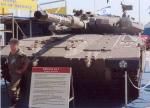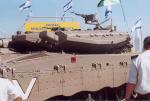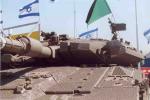
|
||||||||||||||||||||||||||||||||
Les opérations militaires et l’épreuve de feu sur le terrain ont prouvé le bien-fondé des idées qui avaient été à l'origine de la conception du char israélien Merkava.
Merkava Mark 3
Military operations in the event of fire on the ground have shown the merits of the ideas that had been behind the design of the Israeli Merkava tank.
|
|
Droit d’auteur La plupart des photographies publiées sur ce site sont la propriété exclusive de © Claude Balmefrezol Elles peuvent être reproduites pour une utilisation personnelle, mais l’autorisation préalable de leur auteur est nécessaire pour être exploitées dans un autre cadre (site web publications etc) Les sources des autres documents et illustrations sont mentionnées quand elles sont connues. Si une de ces pièces est protégée et que sa présence dans ces pages pose problème, elle sera retirée sur simple demande. Principaux Collaborateurs:
Nb
de visiteurs:8727751 Nb
de visiteurs aujourd'hui:2723 Nb
de connectés:63
| ||||||||||||||||||||||||||||||






.jpg)




